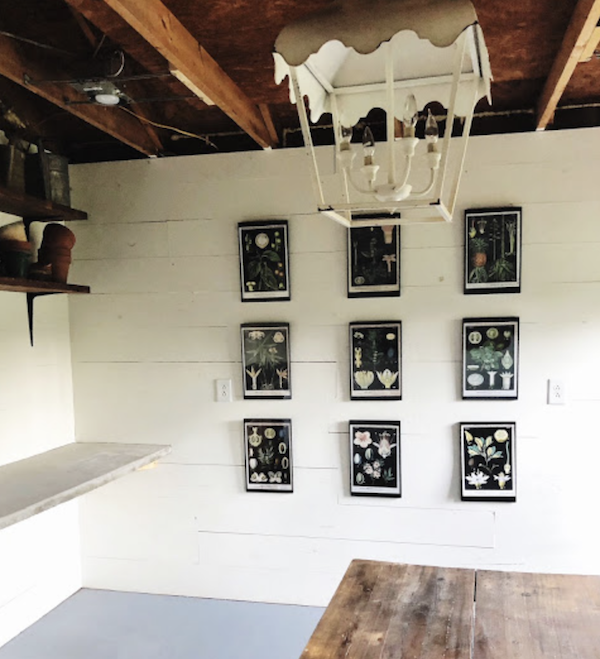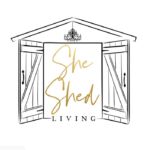Working from home is a common trend for many employees and entrepreneurs. Often the room or structure that is available for the home office was designed for some other use and is not equipped just right. It’s important to plan carefully in a small shed space so the office will provide a comfortable working area in which you can achieve maximum efficiency.
Start with these five “rules” that will infuse your space with all the comfort and amenities necessary for productivity. Once you get these done you can create personal touches inside, like incorporating your favorite possessions and color accents.

Photo: Rebecca Ittner
Find a productive space
A dedicated shed or studio in the back yard is an ideal solution for your workspace. This intensely quiet and personal space will bring you joy, keeping you nearby yet separate from the various distractions around the house. You’ll find that creating an office for yourself in a she shed helps you think outside the box and leads to boosted creativity.

Photo: Rebecca Ittner
Functional furniture
Regardless of the amount of space you have, the furniture you choose should be functional – so choose a desk, shelves and cabinets that provide storage space and enable you to do your job effectively. The style should be selected based on the look you like. For example, you may like vintage, industrial, farmhouse or French décor for your choice of furnishings.
Ideally, the layout of your furniture should logically accommodate your workflow. Items you use regularly should be in touching distance, and if you need time away from the computer, set up a quiet space for thinking.
Comfort is important – especially when you are sitting in the same position for the better part of the day. Invest in an ergonomic chair that can be adjusted to support your neck, shoulders and lower back. Just because you are working from home, doesn’t mean your health and well-being should suffer when doing your job. And don’t forget the chaise for the nap you may want for critical battery recharging.
Think lighting through carefully
Good lighting is essential. Studies show that natural lighting improves mood and energy levels. Conversely, a lack of sunlight contributes to vitamin D deficiency and contributes to depression.
Ideally, you should position your desk near a window so that you are exposed to natural sunlight during the day. Task lighting is the best option for working the hours after the last light of day has disappeared.
Poor lighting also damages your eyes when reading, and poorly positioned lights cause a glare on the computer screen. Make provisions for your office shed to be brightly lit during the day and subtle lighting at night.
Color code to suit your personality
The psychology of color is a well-defined field that is used predominantly throughout the design industry. Color is known to evoke certain emotions and can have an impact on energy levels.
Professional designers recommend including natural, earthy tones in a color scheme as they reduce stress levels and evoke feelings of peace and relaxation. Blues, greens, browns and violets are all soothing colors. Bright colors such as red, orange and yellow are attention-grabbing and evoke a sense of urgency. These types of colors are known to stimulate the brain, which can help productivity. However, too much brightness can overstimulate the brain and cause fatigue. It is recommended that bright colors are toned down with contrasting colors such as whites and cool grays.
Wireless layouts
Thanks to wireless technology, there is no reason to be consistently hooked up to cables. However, machines need power so the layout of your office should be arranged to accommodate power points for your equipment without wires creating a hazard.
If you don’t have power plug sockets in the right places, consider using wire management solutions such as clamps, zip ties, or gaffer tape to keep stray wires in position.
Whether you’re a freelancer, e-commerce entrepreneur, or remote working for a company, creating a shed/studio office that stimulates productivity and protects your health and well-being is important and will reap many benefits.

Photo: Katie Mead | Belle on a Budget
Once the basics are done, it’s time to add your theme with your favorite things to the space to bring inspiring thoughts in your space. For example, you can find free art on the internet and enlarge them, then hang them with inexpensive wood frames – like Katie Mead did with botanical prints for her floral design business. Katie also created a mood board to design her shed and its interior. This is the fun part, maybe do a mood board to get started with the creative part.




Leave a Reply